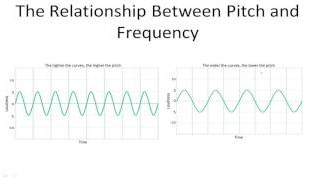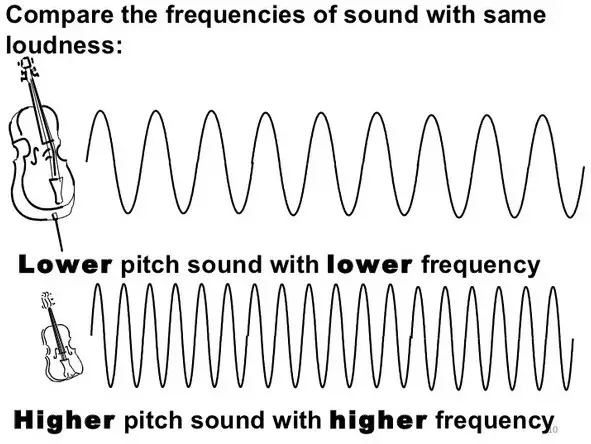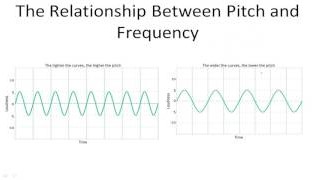Sound permeates our lives, from the chirping of birds at dawn to the symphony of urban chaos. At the heart of these auditory experiences lie two fundamental concepts: pitch and frequency. These elements not only define our auditory landscape but also influence how we perceive sound. By exploring the relationship between pitch and frequency, we gain insight into the very fabric of sound itself.
Pitch and frequency are directly related; as the frequency of a sound wave increases, so does the perceived pitch. Frequency, measured in Hertz (Hz), refers to the number of sound vibrations per second, while pitch is how high or low a sound seems to a listener. This intrinsic connection means that understanding one concept helps clarify the other, enriching our comprehension of sound’s nature.
This relationship plays a pivotal role in various aspects of daily life and technology, from the creation of music to the design of acoustics in architecture. By examining how pitch and frequency interact, we uncover the principles governing sound production and perception, laying the foundation for advancements in audio technology and enhancing our appreciation of the sounds that surround us.

Sound Fundamentals
The Nature of Sound
Sound is a phenomenon we experience daily, yet its fundamentals are rooted in simple scientific principles. At its core, sound is the vibration of air molecules, transmitted from a source through a medium, such as air, water, or solid materials, to our ears. When an object vibrates, it causes the surrounding medium to vibrate as well, creating sound waves. These waves travel through the medium until they reach our ears, translating into the sounds we hear.
Key Concepts
Frequency
Frequency is a key concept in understanding sound. It refers to the number of vibrations that occur per second in a sound wave, measured in Hertz (Hz). Frequency is directly related to the pitch of a sound; higher frequencies produce higher pitches, while lower frequencies result in lower pitches.
Pitch
Pitch is how high or low we perceive a sound to be, based on its frequency. Unlike frequency, which can be precisely measured, pitch is subjective, varying from person to person. It is a critical aspect of music, speech, and sound identification.
Wavelength
Wavelength is the distance between consecutive points of a sound wave, such as the distance between two peaks or troughs. It is inversely related to frequency; sounds with higher frequencies have shorter wavelengths, and vice versa.
Amplitude
Amplitude refers to the height of the sound wave. It determines the sound’s loudness or volume. Larger amplitudes produce louder sounds, while smaller amplitudes result in quieter sounds. Amplitude is measured in decibels (dB).
Pitch Explained
Defining Pitch
Pitch allows us to differentiate between a high note and a low note. It is the auditory sensation created by the frequency of sound waves and plays a significant role in music, language, and the everyday sounds around us.
Factors Influencing Pitch
Frequency’s Role
The primary factor influencing pitch is the frequency of the sound wave. Sounds with higher frequencies are perceived as higher pitched, while those with lower frequencies are heard as lower pitched.
The Human Ear
The human ear also plays a crucial role in how pitch is perceived. It can distinguish between different frequencies, allowing us to interpret pitches. The ear’s sensitivity varies across frequencies, affecting how we perceive pitch.
Frequency Unpacked
Frequency Defined
Frequency is fundamental to the understanding of sound. It determines the pitch of the sound we hear and is measured in Hertz (Hz), representing the number of cycles a sound wave completes in one second. The concept of frequency is essential in acoustics, music, and technology related to sound.
Measuring Frequency
Frequency is measured in Hertz (Hz), with one Hz equating to one cycle per second. The measurement of frequency involves determining how many times a sound wave oscillates within a second. This can be done using various instruments and software, providing a precise understanding of a sound’s pitch.
Pitch and Frequency Relationship
Direct Correlation
The relationship between pitch and frequency is linear; as the frequency increases, so does the perceived pitch. This direct correlation is fundamental in music, where changing the frequency of a note changes its pitch, allowing for the creation of melodies and harmonies.
Pitch Perception
Human perception of pitch varies with frequency changes. For instance, the difference in pitch between 100 Hz and 200 Hz is more noticeable than that between 1000 Hz and 1100 Hz, even though both represent a 100 Hz increase. This phenomenon is part of why certain music scales and chords resonate differently across various frequencies.

Scientific Perspective
Physics Behind Pitch and Frequency
The relationship between pitch and frequency is rooted in physics. Sound waves are mechanical waves resulting from the vibration of particles in a medium. Frequency, the rate at which these particles vibrate, directly impacts the pitch that humans perceive. The faster the vibration (higher frequency), the higher the pitch. This is because our auditory system interprets rapid vibrations as high sounds, while slower vibrations are heard as low sounds.
Studies and Research
Recent studies have delved deeper into how humans perceive pitch and frequency. Research published in the Journal of Acoustic Society of America demonstrates how the human brain processes different frequencies to distinguish between pitches. These findings have implications for audio engineering, hearing aids design, and understanding auditory disorders.
Practical Examples
Musical Instruments
Each musical instrument produces sound at specific frequencies, creating distinct pitches. For example:
- Pianos generate sound by hammers striking strings, with each string tuned to produce sound waves at a certain frequency, resulting in different pitches.
- Violins adjust pitch through the tension of their strings; tightening a string increases its vibration frequency, raising the pitch.
- Wind instruments like the flute change pitch by altering the length of the air column inside the instrument, which changes the frequency of the sound waves produced.
These examples illustrate the direct manipulation of frequency to achieve the desired pitch in music.
Everyday Sounds
In our daily lives, we encounter a myriad of sounds, each with its own frequency and pitch:
- Bird songs vary in pitch according to the species, with each bird’s vocal cords vibrating at different frequencies.
- Traffic noise consists of a mix of frequencies, from the low rumble of a truck to the high-pitched squeal of brakes.
These everyday examples show how pitch and frequency define our auditory landscape.
Pitch, Frequency, and Sound Quality
Timbre and Overtones
Timbre describes the quality of sound that makes two notes with the same pitch and loudness sound different. It’s influenced by overtones, which are higher frequencies that resonate along with the fundamental frequency of a sound. The combination of these frequencies contributes to the character of the sound, making a violin sound different from a piano, even when they play the same note.
Impact on Music and Communication
Pitch and frequency are not only vital for music production but also play a crucial role in communication. The pitch of human speech can convey emotions, intentions, and subtle nuances of meaning. In music, composers use pitch to evoke certain feelings and build harmony.
Advanced Concepts
Pitch Range and Limits
Humans can typically hear frequencies ranging from 20 Hz to 20,000 Hz. Within this range, the pitch we can perceive is vast, allowing for the rich diversity of sounds in music and nature. However, our sensitivity to pitch varies; we are most sensitive to frequencies between 2,000 Hz and 5,000 Hz, where human speech predominantly lies.
Digital Sound and Pitch
In the digital realm, sound is represented through sampling and quantization processes, which capture and encode sound waves into digital formats. Digital audio technologies allow for the precise manipulation of frequency and pitch, enabling the creation of virtual instruments, pitch correction in music production, and sophisticated audio effects.
Frequently Asked Questions
What determines the pitch of a sound?
The pitch of a sound is primarily determined by its frequency. Higher frequencies produce higher pitches, while lower frequencies result in lower pitches. The human ear perceives these variations in frequency as different tones or notes, making frequency the key factor in pitch determination.
How is frequency measured?
Frequency is measured in Hertz (Hz), which represents the number of cycles or vibrations a sound wave completes in one second. This unit quantifies how often a sound wave oscillates, providing a direct measurement of sound’s vibrational speed and its corresponding pitch.
Can humans hear all frequencies?
Humans can hear frequencies ranging from approximately 20 Hz to 20,000 Hz. This range varies among individuals and can decrease with age. Sounds outside this range, such as infrasound (below 20 Hz) and ultrasound (above 20,000 Hz), are not perceptible to human ears.
How does frequency affect musical instruments?
The frequency of a note determines its pitch, which is crucial for musical instruments. Each instrument produces sound waves at specific frequencies to create notes of varying pitches. The manipulation of these frequencies allows musicians to produce music with a rich variety of tones and harmonies.
Conclusion
The exploration of pitch and frequency unveils the intricate dance between physics and perception that defines our auditory experience. By understanding how these elements interact, we enrich our appreciation for the complexity and beauty of sound. This knowledge not only enhances our daily auditory experiences but also informs the development of technology and art, illustrating the profound impact of sound on human culture and innovation.
As we continue to explore the nuances of pitch and frequency, we open doors to new discoveries in acoustics, music, and audio technology. These insights promise to deepen our connection with the world around us, revealing the unseen threads that weave the tapestry of sound that envelops our lives.

